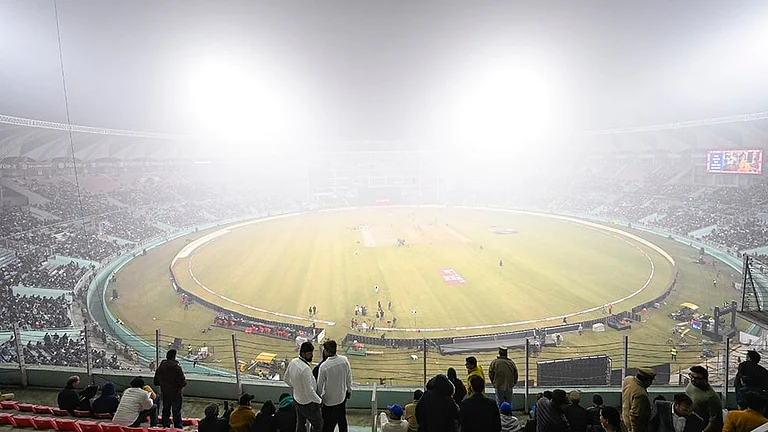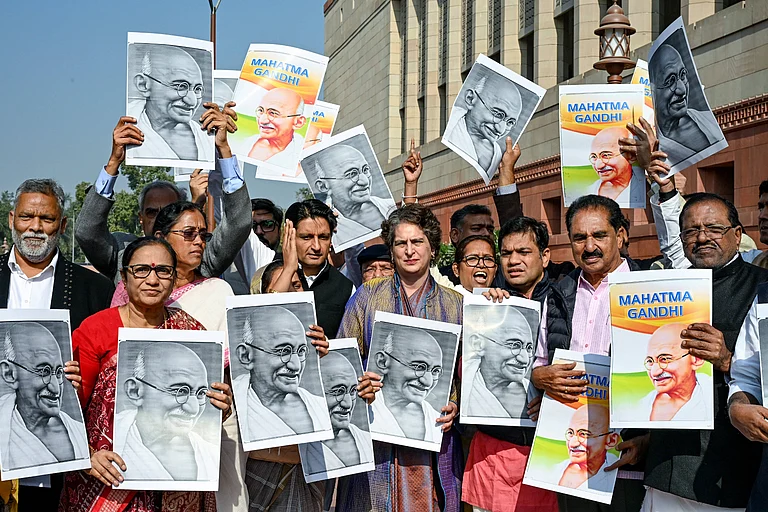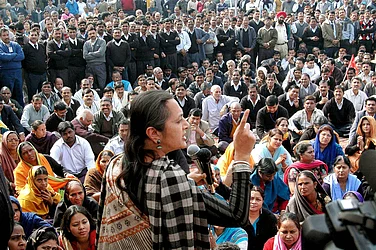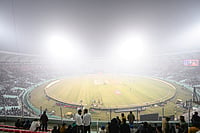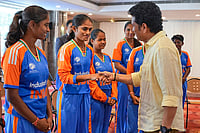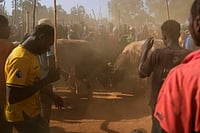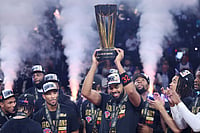The epics, Mahabharata and Ramayana, are two major texts that have had a profound philosophical, cultural and spiritual impact on the minds of people in the subcontinent. In both texts, mythology overlaps with a feminist philosophy, which has a way of making a comment, especially on the state of women throughout the ages. And because the epics are ingrained in the minds of both young and old, they find expression in almost every manifestation of artistic creation related to the subcontinent, especially when it comes to the portrayal of women.
Years of research have tried to establish the interconnections between religion, feminism, myth, sexuality, poetry, spirituality, and literature. This deep dive into an understanding of the divine Mother, who seems to be born within our dualities, raises many questions that seek to find their answers in our own understanding of who or what is Durga.
In Bengal, the image and understanding of Durga, and what she represents, have evolved over the last hundred years. From understanding Durga as a feminine energy created to destroy evil on earth, the goddess today embodies the contemporary woman and her struggles. At some levels, she is black as the night, gentle yet fierce, Kali the destroyer and then suddenly the young girl across the road who forgot to tie her wild hair. Gone are the days when the imagery of Durga was only confined to the all-powerful deity riding on the back of a lion, chasing demons. Today’s Durga spreads her ten hands, encompassing yet gentle, she sets foot into areas that affect every woman and her daily struggle to survive.
In 2020, a Covid-battered world still celebrated Durga and her all-enveloping motherly care and strength. But this time, the world saw a different avatar of hers. Barisha Club in Behala, Kolkata, imagined Durga as a relief worker, a caregiver, and a migrant worker who not only stood as the epitome of strength for her family but also walked the roads with other migrant workers as they fled home.
Barisha Club put up an idol of Durga carrying a small child in her lap, turning around in anxiety, a third eye on her forehead in the form of her smudged bindi. It was later revealed that the inspiration for the idol was derived from artist Bikash Bhattacharjee’s ‘Durga’ series conceived in 1989.
Bhattacharjee, a well-known Indian artist, conceived this series whereby a regular woman is portrayed as Durga. This woman inevitably seems to have been trapped in a frenzied universe, while she looks at the ongoings, while maintaining a little distance from all of it. The artist’s Durga is never an idolised woman, but a regular middle-class one who sees and understands the corruption and violence around her, but chooses to retain her inner strength, even while she remains slightly aloof from it all.
The fact that various creative minds have found an embodiment of Durga in different dimensions and in different avatars is hardly unusual, for Durga is a many-faceted woman who dons several hats. As a modern woman, I think many of us find ourselves aligned with a long line of women who, through Durga, are trying to articulate their own realities.
I recollect a strange incident from last year’s Durga Puja. While the entire family was busy getting ready to attend the afternoon bhog at the nearby Durga Puja Pandal, I noticed a young woman with a small child in her lap, begging from door to door. When she reached my doorstep, I asked her what it was that she was looking for. The girl was silent. Her head bent downwards, she continued looking at her feet on the road. Unsure of how I could help her, I brought out some food for her.
As I placed the packet in her hands, I noticed her startling grey-blue eyes. Feeling a bit jolted, I asked her what her name was. Parvati, said the girl. The name is synonymous with Shiva’s wife, who is supposed to be another form of Durga. For most Bengalis, Durga Puja is more a cultural phenomenon than a religious one, but a Parvati begging on the day the Goddess is worshipped was too much of a coincidence. There seemed to be an eternity of silence between us.
They say reality is stranger than fiction. Perhaps it is, or perhaps it isn’t. Perhaps, the thousands of idols that are breathed with emotion, power and superhuman qualities are just manifestations of what we ourselves are capable of.
In my mind’s eye, I was suddenly reminded of a music festival I had attended in Bolpur Shantiniketan, where the Bauls and Tantriks visit in hordes. There, amidst songs sung under the stars and breeze from the Kopai River, I witnessed the dark Goddess Kali being birthed under the careful eyes of an artist, oblivious to all else beside him.
Sitting beside him, at the feet of that emerging Kali, was a white man, Gerald, a filmmaker from Hong Kong, who spoke to me about his understanding of the Mother’s spirit not being confined to the East. Kali and Tara merge with Durga in that sense, and eventually, the Black Virgin, sacred to Christianity, seems not too far away in essence.
Irrespective of who we worship and how, we have become a part of a larger re-imagining, where along with feminist scholars and theologians, millions of women find themselves in a strange inexplicable way connected to the worship of this female power. Perhaps, it is our attempts at unearthing our own submerged traditions and search for that absent Mother, beyond all our polarities and dualities, that we have been devoured by within our narrow identities. And as such, this is more of a journey of finding ourselves, and allowing ourselves, in fact, to open up to a vast world of magic that awaits us.
(This appeared in the print as 'Durga, the Everyday Woman')
Maitreyee Chowdhury is a poet and writer








